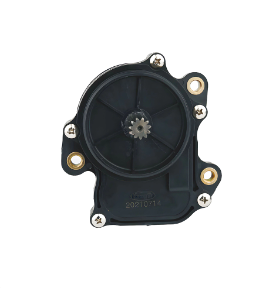In an industry where safety is paramount, automakers face the relentless challenge of designing vehicles that satisfy a complex web of international regulations, from Europe's stringent ECE standards to North America's FMVSS requirements. Beyond the headline-grabbing airbags and crash-avoidance systems lies a world of critical, yet often overlooked, components that form the bedrock of a vehicle's structural integrity. The ATV Electric Drive Actuator is one such component, emerging as a vital player in the compliance conversation. This electrically driven unit is responsible for the precise adjustment and secure locking of the windshield bracket attached to the front axle, a function that directly influences occupant protection during a collision. For engineering teams and compliance officers, this motor represents a key solution in ensuring that every vehicle not only meets but consistently exceeds the demanding criteria set by global safety authorities, making it an indispensable ally in the pursuit of uncompromising safety.

The difference between a passing and failing grade in official safety assessments often comes down to millimeter-perfect tolerances and repeatable performance. The ATV Electric Drive Actuator delivers this precision by automating the critical alignment between the windshield, its bracket, and the vehicle's primary front structure. In the event of a frontal impact, the windshield must work in concert with the A-pillars and roof frame to prevent cabin intrusion and ensure the proper deployment of front airbags. A bracket that is even slightly misaligned, due to imprecise manual adjustment or an inferior motor, can create a weak point, compromising the entire safety cell. By providing consistent, calibrated torque and movement, this advanced motor guarantees that the windshield is anchored as a structural member, directly contributing to achieving top marks in crashworthiness evaluations.
Vehicle safety cannot be a fair-weather proposition; it must be guaranteed in all conditions. Industry discussions frequently highlight the risks posed by corrosive road salts, torrential rains, and extreme temperature fluctuations, all of which can degrade component performance over time. The ATV Electric Drive Actuator is engineered to confront these challenges directly. Featuring a sealed housing that protects its internal mechanisms from moisture, dust, and corrosive elements, it is built for long-term reliability. This resilience ensures that the bracket's clamping force remains uncompromised, whether in a freezing blizzard where ice accumulation threatens to shift components or in scorching heat that tests material integrity. This unwavering performance in harsh environments provides automakers with the confidence that their vehicles will maintain their structural safety throughout their operational life, a key consideration for brand reputation and customer trust.
The move towards electrically controlled components like this motor is part of a larger industrial evolution towards Industry 4.0 principles and data-driven manufacturing. Unlike a passive bracket, a motorized system can be integrated into the vehicle's quality control and diagnostic networks. During assembly, it can provide feedback to confirm a successful and correct installation, creating a digital record for that specific vehicle's build quality. This traceability is increasingly valuable for demonstrating compliance during audits and recalls. Furthermore, by ensuring a perfectly repeatable process on the production line, it eliminates the human error factor in a safety-critical step, allowing automakers to standardize quality across different manufacturing plants and shifts, thereby streamlining their global compliance strategy.
For automakers, time spent re-engineering components or re-testing prototypes due to compliance failures represents a significant financial and temporal cost. Proactively integrating a proven and reliable ATV Electric Drive Actuator mitigates these risks substantially. By selecting a component with a validated track record of meeting global standards, engineering teams can shorten their validation cycles and accelerate time-to-market. This strategic choice transforms the compliance journey from a reactive, problem-solving exercise into a proactive, confidence-driven process. It allows automakers to focus their resources on further innovation, secure in the knowledge that this fundamental aspect of structural safety is robustly and reliably addressed.
Your email address will not be published. Required field are marked*